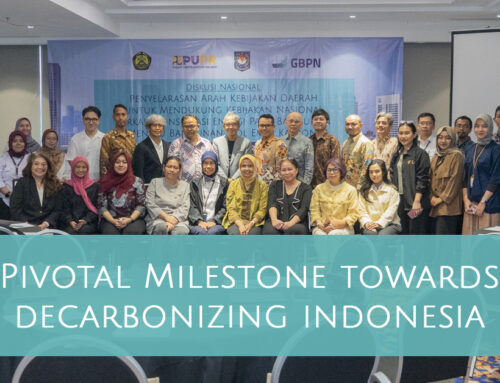[Tool] New Interactive Tool for Building Energy Performance Scenarios (BEPS)
Today, as a contribution to the World Environment Day (WED), the GBPN launches a new open source interactive tool for identifying the best possible policy scenarios for saving energy in the building sector worldwide. The new Tool for Building Energy Performance Scenarios (BEPS) enables anyone interested in energy efficiency in buildings to access data and projections and find out where we could be in terms of energy use by 2050 under three different scenarios (deep, moderate and frozen), depending on the ambitiousness of policy decisions and technology choices.

As emphasised by the recent IPCC AR 5, we need urgent action to avoid the devastating impacts of climate change. It highlights the fundamental scientific consensus that reducing the energy demand of the building sector is key to addressing climate change. According to the IPCC, the building sector is responsible for nearly 20% of global green house gas (GHG) emissions, yet offers that greatest cost effective energy and associated GHG emissions savings. With this new tool, the GBPN aims to support ambitious policy action toward the deep scenario, which is the only scenario in which energy demand from buildings is reduced over time. This represents the necessary path to take to help the building sector play a leading role in mitigating climate change.

The deep efficiency scenario presented in this tool, shows that by 2050, it is possible for the building sector to consume 30% less thermal energy than it does today, even with the expected growth in population, floor space and comfort. Achieving this requires ambitious policies for net zero energy new buildings and deep energy renovations to become the norm in the coming decade.
What can you do with the Tool?
This new tool, based on nearly a decade of development by, the Central European University, the Global Energy Assessment and the IPCC enables you to interactively engage with modelled data for the three possible energy use scenarios for the building sector (deep, moderate and frozen), globally and in 11 regions, between 2005 and 2050. It allows you to:
- Find out whether policy settings in the regions of the world are reducing or increasing climate change impacts;
- Visualise and quantify the potential lock-in of energy demand from buildings over time;
- Identify policy measures that could shift markets to energy savings pathways and quantify the energy savings potentials.
You can conduct your own analysis and generate charts and tables by selecting parameters corresponding to your search needs (final energy use for water heating, space heating & cooling, climate conditions, scenarios, time periods, building vintages and building types). The tool provides open access to the world’s best aggregated data analyses on building energy performance. It is possible to download each of the data series and we invite users to use the models freely. A Quick start guide for developers to access and use the GBPN Linked Open Data (LOD) is also available.
Watch the Tutorial:
Background Information:
The Tool for Building Energy Performance Scenarios is the visualisation of the results of two seminal GBPN reports on the energy savings potential of the building sector globally:
– Best Practice Policies for Low Carbon & Energy Buildings Based on Scenario Analysis, Center for Climate Change and Sustainable Energy Policy (3CSEP), Central European University, commissioned by GBPN, 2012
– Buildings For Our Future, The Deep Path for Closing the Emissions Gap in the Building Sector, GBPN-KPMG, 2013.
Related News
Related Report Bundles
- Buildings For Our Future, The Deep Path for Closing the Emissions Gap in the Building Sector
- Best Practice Policies for Low Carbon & Energy Buildings Based on Scenario Analysis
Related Blogs
Share This Story, Choose Your Platform!
Stay in touch with how we’re transforming the buildings sector
GBPN runs innovative building policy reform programs in key regions around the world that aim to tackle the climate emergency by decarbonising the buildings sector. Stay up to date with our newsletter.
Stay in touch with how we’re transforming the buildings sector
GBPN runs innovative building policy reform programs in key regions around the world that aim to tackle the climate emergency by decarbonising the buildings sector. Stay up to date with our newsletter.







